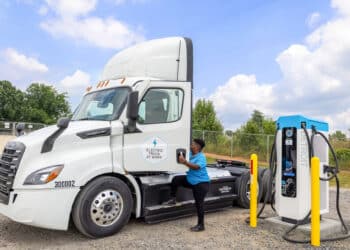As fraudulent activity continues to increase in the modern equipment finance landscape, best practices such as training, tech investment, dedicated personnel, information management and communication are key to fraud prevention and risk management.
In 2022, the more than 250 financial institutions surveyed in Alloy’s State of Fraud Benchmark Report, which was released in January, stated that they experienced fraud. Moreover, 96% of the financial institutions surveyed had lost money to fraudulent activity over the previous 12 months, with 91% stating fraud increased year over year.
As a result, 99% of financial institutions updated their practices to better prevent fraud. While ending fraud completely is almost impossible, best practices can help manage and minimize risks.
Increased fraud training and controls are among the tools that lenders can adopt, along with improving their tech stacks and revamping communication practices. Here are four best practices for fraud prevention for equipment lenders.
1. Investment in technology
More than half — 59% — of surveyed financial institutions indicated they will invest in machine learning and artificial intelligence in 2023, with institutions also listing future investments in technologies such as biometrics and robotics, according to the fraud report.
Investment and adoption of technology are key to preventing or reducing losses on common fraud schemes like stolen or synthetic identities, Jason Ioannides, director of solutions engineering at Alloy, told Equipment Finance News.
“On the financial institution side, we’re able to reduce the amount of loss that they’re going to incur,” he said. “You don’t ever want to write a loan to somebody with a stolen identity, for example, and you certainly don’t want to write a loan to a synthetic identity, because you’re never going to be able to recoup that money.”

2. Dedicated dealer personnel
It’s also important to have dedicated, trained personnel to manage fraud on the customer and dealer side, with 41% of financial institutions indicating that the absence of dedicated fraud teams is part of why their organization is unprepared to prevent fraudulent activity, according to Alloy.
Dedicating people to the dealer side of transactions helps prevent dealer fraud, Lou Maslowe, chief risk officer of the commercial domain for DLL, said during a panel at the ELFA’s Credit and Collections conference recently.
“At DLL, we have what we call a vendor services group, and they do nothing but onboard dealers and monitor dealer performance,” he said. “We have them look for anything that looks out of the ordinary, and one of the things that you have to look at it is if there’s ramp-up in activity all of a sudden. … It could be a signal that something’s going on.”
Two other potential signals for dealer fraud are zero-payment charge-offs and first-payment defaults, which lenders should monitor vendors to help prevent, Maslowe said. Lenders should take a close look at dealer practices related to high-risk assets such as small ticket, technology, point of sale systems and security systems, he said.
3. The three V’s
Vetting, verifying and validating information is critical to fraud prevention and risk management, especially as fraud continues to evolve. The two largest fraud concerns for financial institutions in 2023 are synthetic identity fraud and application fraud, according to Alloy.
“Data validation, and it’s the same with document validation … some technologies are out there where you can tell if the bank statement or financial statement has been doctored,” Kristian Dolan, chief executive of Northteq, said during ELFA’s conference. “With third-party and synthetic [fraud] … you’re still going to do the data validation and document validation, but … other key things there are identity and behavior.”
Verifying data, documents, identities and behavior requires a substantial amount of effort, which adds to the importance of having the proper tools and technologies to manage that information, especially considering Section 1071 of the Dodd-Frank Act.
Companies should look to implement tools that facilitate information vetting, verification and validation, “especially with the dollar amounts that equipment financing companies are operating at, the risk of losses is staggering,” Alloy’s Ioannides told EFN. “You can make a serious dent in the fraudster’s ability to get through the gate if you’re being rigorous about those fraud checks upfront.”
4. Communication reduces fraud
Communication, both external and internal, goes a long way in reducing fraudulent activity.
Procedures like phone validation on deals with customers and dealers help with the verification process, DLL’s Maslowe said during the ELFA panel. Even something as simple as a phone call to another lender about a questionable transaction can reduce or eliminate fraud.
Meanwhile, 37% of financial institutions believe that the fragmented/siloed approach to fraud prevention negatively impacts their organization’s preparation, according to Alloy’s report.
“Once the collections manager is getting that itch that something’s not right, he gets me involved and we jump on it. You look at the credit application, we get the sales team involved and we want to catch those right away if we’ve missed something,” Jim Tobin, director of retail credit at Volvo Financial Services, said at ELFA. “Communication is big as is the learning process.”
Ultimately, fraud is unavoidable. “If you want to have no fraud, you have to shut the business down in most cases,” Maslowe said. “It’s finding what is your appetite for fraud.”









